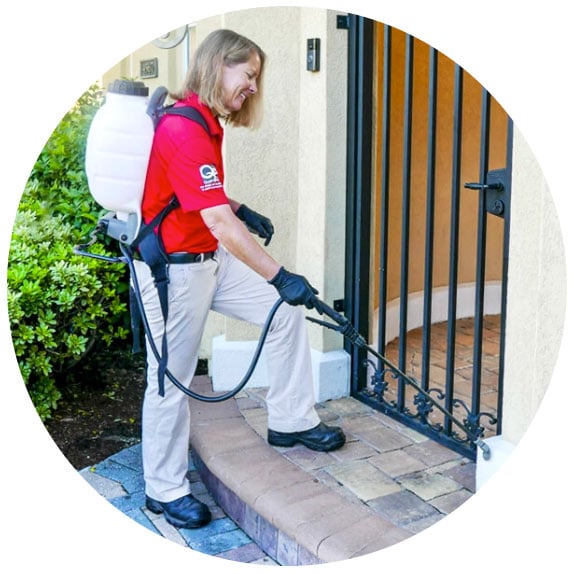Have you ever spied a bug dashing across your kitchen floor or scurrying under a baseboard and thought, “What in the world is that?” It’s clearly not a “common” pest like, say, a cockroach or spider. It’s something… different. If you’ve ever had this experience, the bug in question likely falls in a category we call “occasional invaders.”
As their name implies, occasional invaders are pests that, on occasion, may find their way into our homes, but are not as common as frequent household pests, such as ants, rodents or termites.
Some occasional invaders pose more serious threats than others. To determine the risk to your family, you will need to identify the species. A trained pest professional will be able to properly identify a pest species and its threats.
If you are concerned about occasional invaders getting in your home, there are some simple steps you can take to help prevent them from gaining access.
1. Seal cracks and repair damages: Occasional invader control should begin outside by sealing cracks around windows, doors, siding, utility pipes and underneath wood fascia with a good quality silicone-latex caulk. Damaged screens on doors and windows should also be repaired or replaced. Don’t forget to check for torn weather-stripping and loose mortar.
2. Reduce moisture sites and properly ventilate: Reduce or, if possible, eliminate all moist harborage sites inside the home – specifically in basements, attics, garages and crawlspaces – because the majority of occasional invaders are attracted to moisture. Check for leaky water pipes under sinks, ensure drains are not clogged and look for signs of moldy wood. If there is any evidence of moisture buildup, install a dehumidifier.
3. Landscape: Another key to controlling occasional invaders is the removal of debris around the exterior of the home such as mulch, leaves, grass clippings, stones and boards, as some of these pests are often associated with vegetation. Frequently mow and edge the lawn, and weed plant beds so the home is properly landscaped. Moreover, make sure to store firewood at least 20 feet away from the house and five inches off the ground
4. Change bright lighting: Some occasional invaders such as stink bugs and weevils are attracted to bright lights, so it is recommended that homeowners change outdoor lighting to yellow bulbs or sodium vapor lamps, both of which are less attractive to pests. Inside, windows should be shaded with blinds and curtains so significant light is not visible from the outside.
5. Remove with a vacuum: If occasional invaders enter the home, temporary but immediate relief can be achieved by using a shop-type vacuum to aid in their removal. However, if a vacuum is used to get rid of stink bugs, the bag must be thrown out to prevent the odor from permeating the area.
Most homeowners have spotted an occasional invader at some point inside the house. Usually, one or two of these pests are of little concern, but it can become a bigger problem for homeowners if an infestation develops. It’s best to contact a licensed professional, before a pest invasion grows out of control.
Looking for more information on specific occasional invaders? Check out this Pest Guide to determine what’s bugging you including photos and information about Boxelder Bugs, Centipedes, Milipedes, Earwigs, House crickets, Pillbugs and Silverfish.
Turner Pest Control can help you properly identify the species and determine the best way to treat the problem.

Ready for expert pest control? Find a Turner Pest Control location near you.